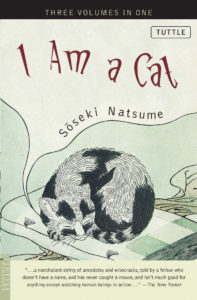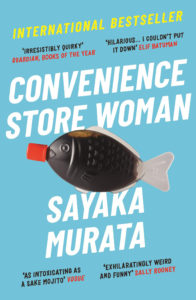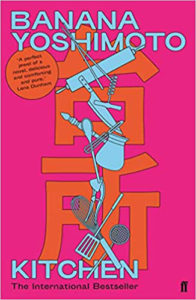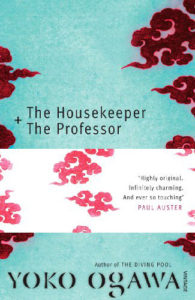Japan doesn’t immediately spring to mind as a literary hub. Its popular culture is usually hidden under the canopy of anime, Harajuku style, and kawaii souvenirs; but there are a plethora of incredibly accomplished Japanese authors whose works have spread worldwide, influencing films and art as they go.

Perhaps the most well-known of Japanese authors is Haruki Murakami. The minimalist covers have become a mainstay in bookshops throughout the UK, with their iconic red and black artwork. He has written more than 40 novels including Norwegian Wood, Kafka on the Shore, and 1Q84 – a behemoth of a story split into three books.
His style weaves mystery and surrealism together with inspiration from Western culture, the regular appearance of cats, and his characteristic dry humour. One of his most recent acclaimed works is the Sunday Times bestselling Men Without Women; a collection of short stories highlighting the lives of different men who all find themselves alone.
Yukio Mishima was a man of many talents: a film director, poet, actor, model, and writer. He was also an eccentric nationalist, loudly campaigning against the Westernisation of Japan. He formed an unarmed civilian militia and led a coup to return power to the Emperor, taking hostages at a military base. When this failed, he committed the ritualistic suicide known as seppuku, often linked to old samurai tradition.
His works were often reflective of his own opinions about how he felt society should be. Novels like The Temple of the Golden Pavilion and Confessions of a Mask saw him being considered for the Nobel Prize for Literature. The Japanese author’s legacy still splits opinion; there are two films about his life and final days and David Bowie even painted him and displayed the work in his Berlin home.

This list would not be complete without mentioning Kazuo Ishiguro. A Nobel Prize winner, he has written six novels that have skyrocketed in popularity, including Never Let Me Go – which was translated into a film starring Keira Knightley, Carey Mulligan, and Andrew Garfield in 2010 – and The Remains of the Day. Ishiguro has actually spent most of his life in England, after leaving Nagasaki at the age of five. His novels are all written in English, but he heavily features Japanese customs and culture in his first two books.
He has become known for carefully dissecting his characters and looking more closely at moral dilemmas and the way we form relationships. He is widely hailed as a genius writer and as having an innate ability to capture emotions.

Natsume Sōseki is one of the classic Japanese authors. He is so celebrated, his image spent 20 years on the 1000 Yen banknote. His influence on the country’s modern literature has been considered profound.
Arguably his most famous work, I Am A Cat tells the story we have always wanted to hear; that of a pompous household cat and its hilarious opinions about its owners and neighbours as it watches them go through their life. The novel is flourished with Sōseki’s dry humour and notes on the country’s growing adoption of Western culture.
A few of Japan’s best authors also lend their hand to other crafts. This is true of Mitsuyo Kakuta, who has become known more recently for her film direction and translation work on The Tale of Genji from the 11th century traditional Japanese.
Her writing has won her a number of prestigious prizes, especially for her novel Woman on the Other Shore. The story was hailed for shedding light on the everyday struggles of women in the country. It follows a housewife going back to work for a career-driven woman whose past taints her present. Kakuta explores how the women’s problems seem disparate but eventually intertwine.
Speaking of The Tale of Genji, its writer Lady Murasaki Shikibu is definitely worth a mention. She was a lady-in-waiting at the Imperial Court during the Heian period in the 11th Century and this book is considered a candidate for the world’s first novel. Sadly, the original manuscript no longer exists but there are thought to be around 300 ancient copies, all of which have slight tweaks suggesting that Lady Murasaki made little changes as she went along.
The novel itself tells of life in Japan’s medieval court, following the story of the Emperor’s son, Genji. After being demoted to a commoner by his father, he elicits a series of affairs. The story is famously difficult to read in its original ancient Japanese and has taken dedicated study to translate it both into modern Japanese and English.
Lady Murasaki’s diary has also been published and includes entries about her writing of the novel.

Stepping back into the present, Sayaka Murata’s Convenience Store Woman has been on every bestseller display in the last year. It’s her only novel that’s been translated into English, but its deadpan humour and relatable storyline have struck a chord worldwide.
The novel looks at a woman thriving in the mundanity of daily work at a shop, who is being hounded by her family for not conforming to societal norms. She’s not married and she’s not a high-flying career woman. She meets someone with who she can form a mutually beneficial relationship with – a man she offers to ‘keep’ on the basis he will make her look more normal and get her family off her back.
It has really catapulted Sayaka Murata into the limelight not only among Japanese authors but across the globe. She has also written nine previous novels and a few short stories which are being translated.

The cartoonish name Banana Yoshimoto is a pseudonym for Mahoko Yoshimoto, picked after her favourite plant, the banana flower. She is fascinated both by the effects of trauma on her character’s lives and “the exhaustion of young Japanese in contemporary Japan”. Across her 12 novels, she has become known for her modern approach and Western style of writing, with simple but vivid imagery that still keeps Japanese culture at its heart.
Her debut, Kitchen, tackles a love story that contrasts and struggles against death. She explores her characters’ suffering and the way that drives their story forward. They are themes that pop up throughout her writing, leaving a harrowing but impactful mark.
Another Nobel Prize-winning Japanese author, Kenzaburō Ōe was raised during the Second World War in a Japan that looked at its Emperor as a deity. He soon became conflicted with that militaristic myth and found himself questioning politics and society while his grandmother told him anti-nationalist stories. Eventually, he came to favour democracy and realise he had been raised on propaganda.
His work is heavily reflective of his life, in particular, learning to reform his life around his first son who is mentally handicapped. With his American and French influence, he especially focuses on people’s struggles after trauma; victims of the Hiroshima bombing, living as a disabled person, and the people of Okinawa after World War II.

Many people will be familiar with Akiyuki Nosaka’s work without realising it as he wrote Grave of the Fireflies, which inspired the widely acclaimed Studio Ghibli film of the same name. It’s a semi-autobiographical novel that tells the harrowing story of his loss and struggle as he lived through the war.
It became a theme in his works and Nosaka became known for his children’s books surrounding the theme of war. The Japanese author wrote into his eighties and his work also includes The Pornographers which was translated into English.
Perhaps Japan’s answer to Hunter S Thompson, Ryu Murakami (no relation to Haruki) is considered the rebel of the writers. Throughout his life, he dabbled in hippie culture, formed rock bands, was placed under house arrest and became an art college dropout all before his first novel was published.
When Almost Transparent Blue came out, he won the prestigious Akutagawa Prize and was seen to be redefining the literary style of the time. He began to cement his signature tone as a dark look at human nature with Coin Locker Babies, a dystopian story of two newborns who are abandoned at Tokyo station.

Yoko Ogawa is a high achiever. She has taken home almost every Japanese literary award and her work has a worldwide reach. She is hailed by her contemporaries as having an innate ability to illustrate deep emotions in her writing.
With more than 50 books to choose from, she is a diverse writer. The Housekeeper and the Professor is a touching story about a brain-damaged professor who can only retain 80 minutes of memory and his interactions with his housekeeper and her son. While not technically a love story, it’s a beautiful display of different kinds of relationships.






































